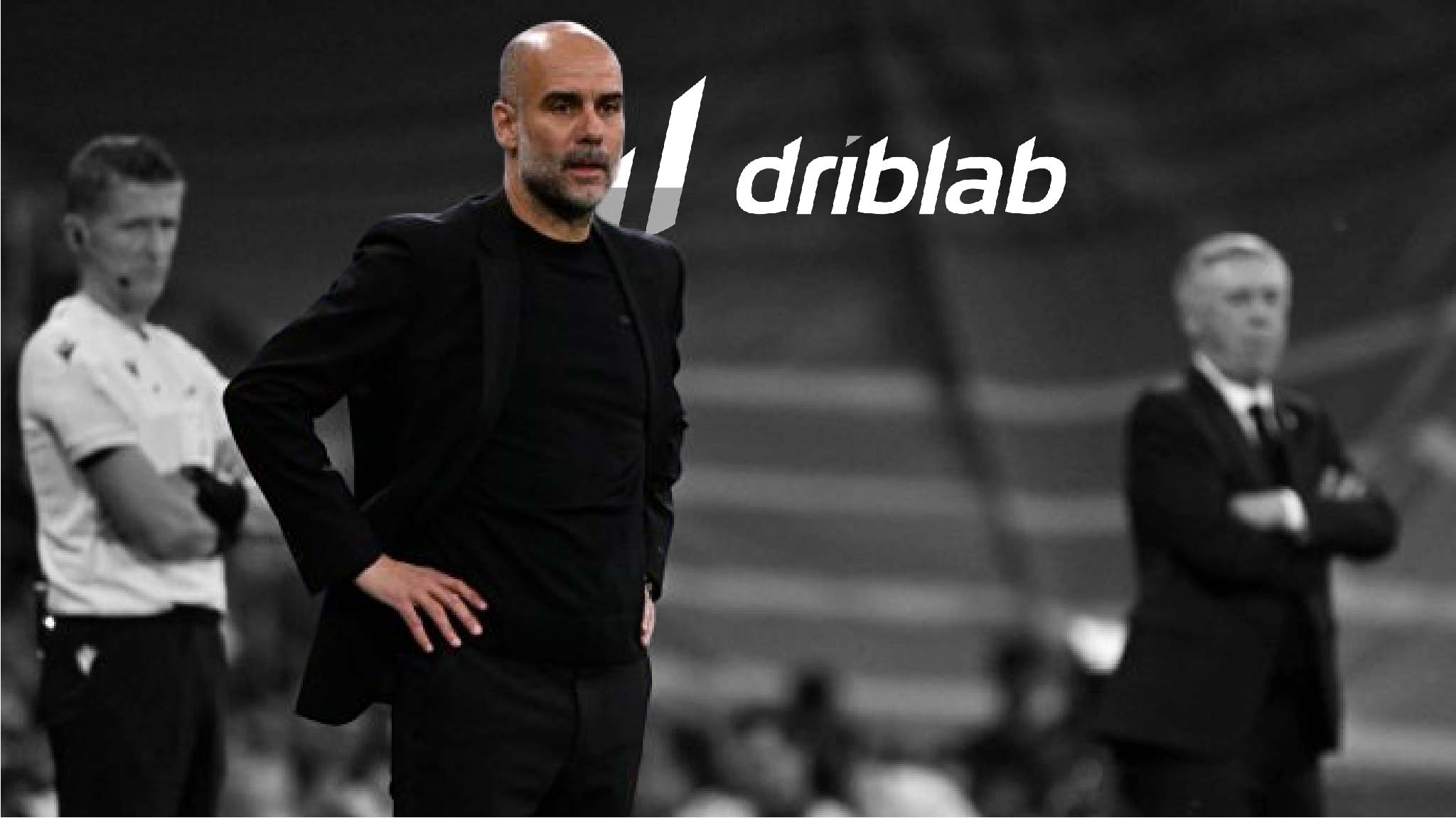The one-goal draw between Real Madrid and Manchester City in the first leg of the UEFA Champions League semi-finals left everything open for the second leg. And although both teams looked to make it happen, it was Manchester City who did the most to make it happen. Let’s explain, through as many visualisations as possible, what Manchester City looked for at the Santiago Bernabeu, as an example of a match plan that an analyst could articulate using data, maps and Driblab visualisations.
To begin to understand why Manchester City changed the way they played and passed the ball, you have to understand who was in front of them. This is the map of Vinicius Junior’s progressions and dribbles in the UEFA Champions League: 205 successful ones, with a multitude of them ending in a pass, shot or goal. One of the most decisive players in the world who needs nothing more than to receive the ball anywhere on the pitch and put it in the box to create goal-scoring chances.
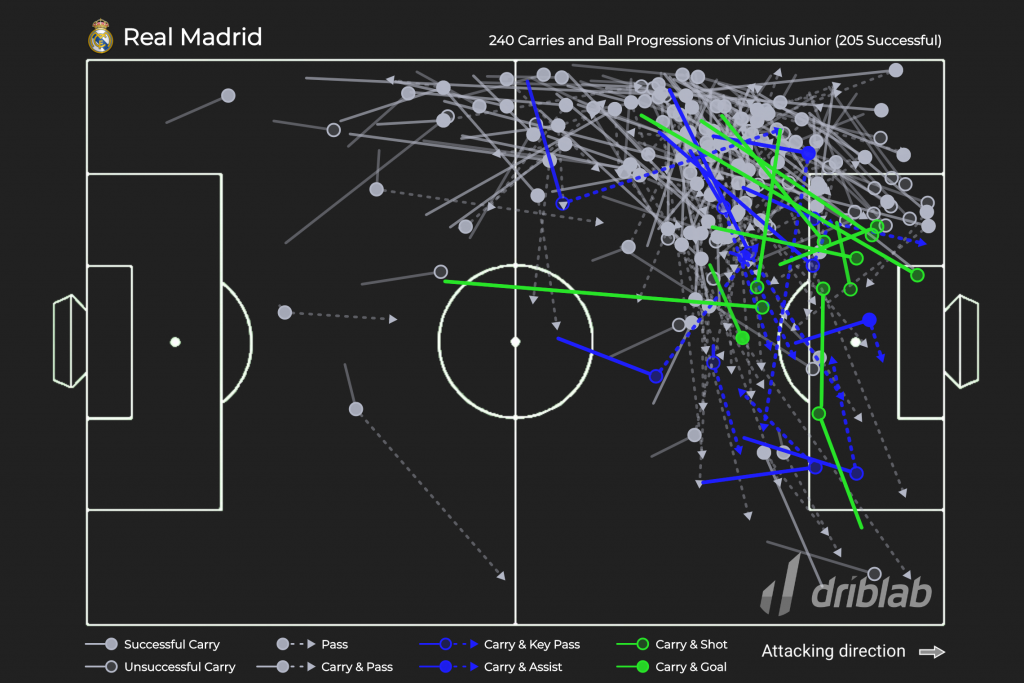
Manchester City usually show a confidence, rhythm and aggressive movements that make them far superior to all their rivals in the Premier League. Individually and collectively, their pattern of play is very dominant through their precision passing and quality off the ball movement of their players. These are a standard City passing maps in the Premier League:
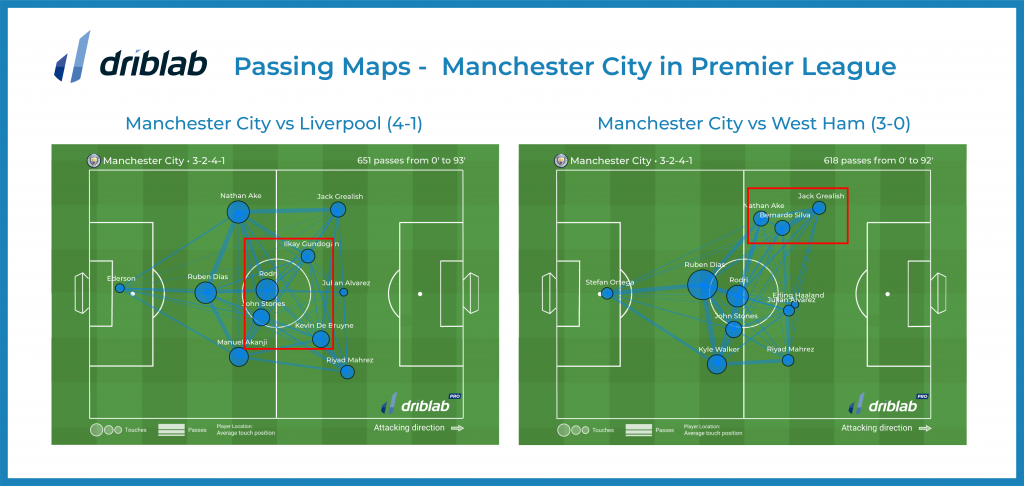
In these maps we can see how the level of the opposition influences the positioning and mobility of their midfield. Against Liverpool, Gundogan and De Bruyne formed a square, with the german closer to Rodri. Against West Ham, an opponent they can dominate in many ways and contain when they go forward, they can advance certain players more to open up the defence and generate attacking volume. If we start from the passing map against Liverpool and understand that their opponent was Real Madrid, in their stadium and in a knockout format, where there is much more to lose, Manchester City’s passing map could be more conservative and cautious. And so it was:
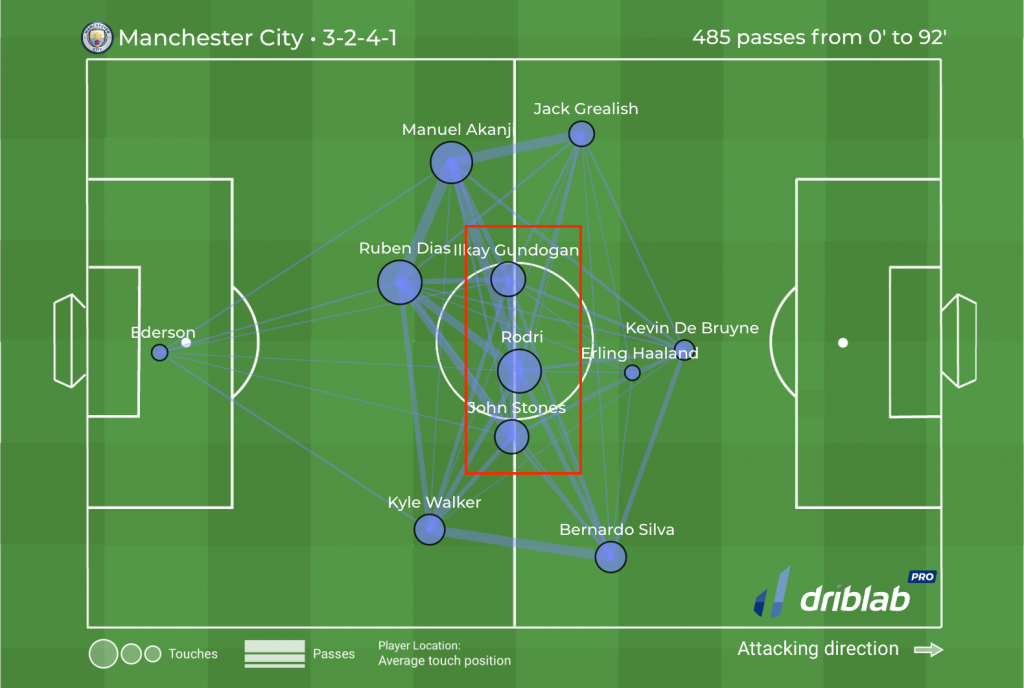
Guardiola only left De Bruyne between the lines, while Gundogan and Stones never received the ball ahead of Rodri or near the wingers, who were always open and without teammates close to progress. Depopulating the midfield at times on the ball would expose City to being punished by Vinicius, Valverde, Benzema and Rodrygo. Their plan would be to have the ball calmly but not aggressively, as seen in the first 35 minutes, until the Brazilian’s great goal. In those 35 minutes, it was easy to see, and this is reflected in the average positions on our maps, how the distances between City’s players were very wide, leaving six players in one block and the four attackers in another block.
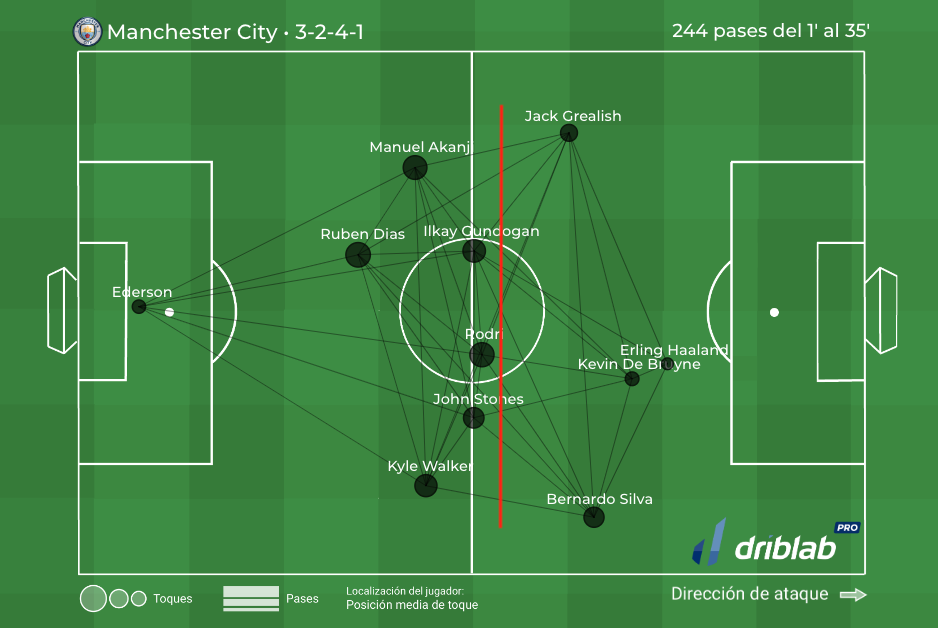
The result was their xG (Expected Goals) and xT (Expected Threat) records. Against Real Madrid, Manchester City recorded their third worst xG record of the season and fourth worst xT. Somehow they played at a very low and cautious tempo and volume, which De Bruyne’s goal meant that they went into the second leg with a good scoreline. However, minute management will be very different the closer it gets to the end and as events unfold.
Founded in 2017 as a consultancy, Driblab has driven innovation through data across all aspects of professional football. Thanks to a transversal model, its database collects and models statistics in all directions. From converting matches and videos into bespoke data for training academies to developing cutting-edge technology, helping clubs, federations and representative agencies in talent scouting and transfer markets. With customisable software and consultancy designs and services, Driblab’s intelligent data is used by clubs around the world, with success stories such as Dinamo Zagreb, Real Betis, Girondins de Bordeaux and Fútbol Club Barcelona. Here you can learn more about how we work and what we offer.
